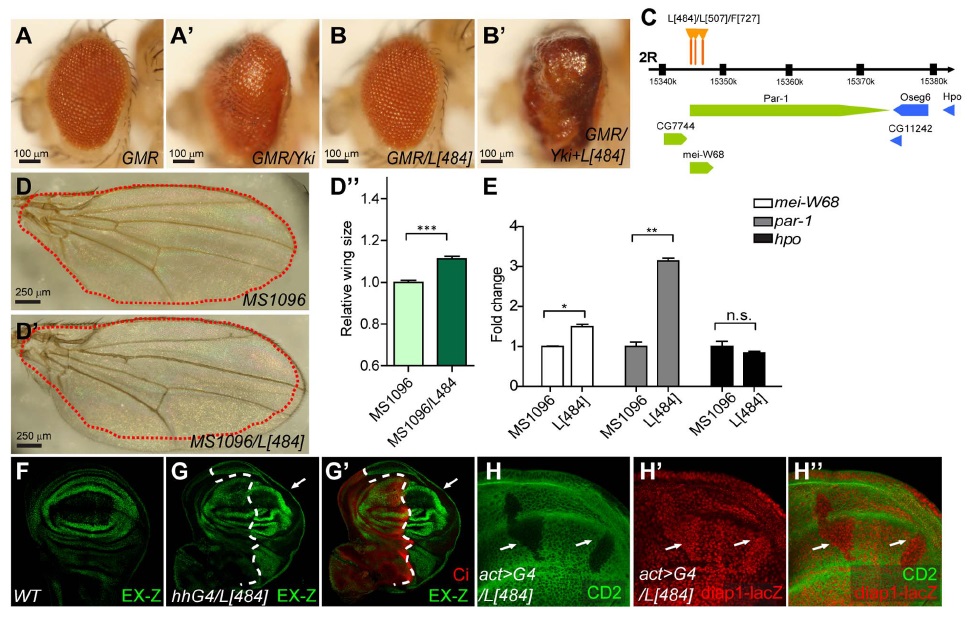The regulation of organ size during the development of animals has been a long-standing puzzle. The discovery of the Hippo signaling pathway started up a promising journey for answer. Dysfunction of the Hippo pathway could induce diseases including carcinogenesis. Now, researchers from the Institute of Biochemistry & Cell Biology (IBCB), Shanghai Institutes for Biological Sciences, have identified Par-1as a novel Hippo signaling component, which greatly expands the knowledge of the Hippo signaling network.
The Hippo pathway regulates organ growth by controlling cell numbers in that organ through the inhibition of the transcriptional co-activator, Yorkie, by a series of phosphorylation events. It is highly conserved from Drosophila to mammals. To better understand Hippo signaling, PhD students HUANG Hongling and WANG Shimin and their colleagues led by Prof. ZHANG Lei, tried to identify novel regulators of the Hippo pathway.
Out of more than 10,000 EP lines, they found that Par-1, a multifunctional serine/threonine kinase, promotes organ growth via negatively regulating the Hippo kinase activity by influencing Hippo phosphorylation status and Hippo-Salvador association. They showed that Par-1 physically interacts with Hippo and its scaffold protein Salvador. They also demonstrated that Par-1 regulates the phosphorylation of Hippo at Ser30 and promotes the dissociation of Salvador from the Hippo-Salvador complex, eventually resulting in Salvador dephosphorylation and destabilization.
This work entitled “Par-1 regulates tissue growth by influencing Hippo phosphorylation status and Hippo-Salvador association”, in collaboration with Prof. LIU Xinyuan and Prof. ZHAO Yun from IBCB, was published online in PLoS Biology on August 6th, 2013. It is supported by grants from the National Basic Research Program of China, the National Natural Science Foundation of China, and the “Strategic Priority Research Program” of the Chinese Academy of Sciences.


